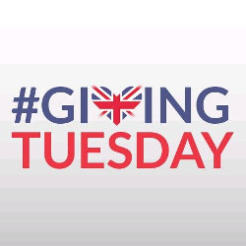#GivingTuesday is "positioned to have a really big year" in the UK in 2015, the movement’s founder told a summit organised by the Charities Aid Foundation yesterday.
Henry Timms, executive director of US charity 92nd Street Y and the man credited by many as the inventor of the #GivingTuesday movement, told delegates that he expected the movement in the UK to see rapid growth in its second year.
In its first year #GivingTuesday trended on Twitter for 11 hours, and Visa donations rose 10 per cent year on year, while donations through JustGiving rose 46 per cent. The movement has more than 820 official partners, 40 per cent of them with fewer than ten staff.
Timms said that usually the second year of the campaign saw the most rapid growth, and that he thought conditions in the UK were particularly good for it to have a good second year.
'Power of the posse'
Timms said that a key lesson of the #GivingTuesday movement for him was that charities, particularly smaller fundraising organisations, can achieve more interaction with donors if they work together to create a buzz around all their activities – an idea he called “the power of the posse”.
He said that too often charities competed for donors rather than promoting the idea of the voluntary sector as a whole.
“We’re good at working for causes that matter,” he said. “We aren’t as good at working together with people who basically care about the same things. #GivingTuesday brings charities together to talk about why the things they care about really matter, rather than about why their own organisation is the best one.”
He said this principle was “often anathema to us in the third sector” but that all charities raised more money if they worked together to promote their causes.
Timms also said that he felt #GivingTuesday gave charities “permission to innovate” and that as a result it generated good ideas in traditional organisations.
He said that it often strengthened charities’ connection with their communities and with one another, and he said that growing giving had proved a smaller-than-expected part of #GivingTuesday, and that it had also proved effective at improving networking, volunteering and support engagement.
“We’re seeing a shift from donors to owners,” he said. “#GivingTuesday encourages people to become more engaged. In the past the most interesting question we’ve asked our supporters is ‘will you give us money?’ but if you can ask questions that get those people engaged with you there are huge opportunities. The most powerful way to raise money is if a friend asks a friend.”
Timms also said that #GivingTuesday was likely to grow as Black Friday and Cyber Monday became ever more popular.
“It’s an antidote to the people who are fighting outside supermarkets over waffle irons,” he said. “The people who hate that kind of thing can engage rather than complain. Instead of rolling their eyes they can roll up their sleeves.”
Timms also said the event offered huge opportunities to increase engagement with corporate supporters.
“This is an effective antidote to Black Friday and Cyber Monday for them, too,” he said. “They can use it to show they care and to talk to their staff.
“I think this year we’ll see some serious corporate muscle behind it.”
Plan more and start earlier
Charities which took part in #GivingTuesday consistently said that they needed to start planning for the event early in the year, and to dedicate more time and resource to implementing effective campaigns.
Consistently charities said it was a valuable opportunity to engage delivery staff and external supporters in fundraising.
They said they recommended that charities launch campaigns well before the day itself, use social media and corporate supporters, and work with other charities to raise their profile together.
Many charities said they used the campaign to promote non-financial messages, whether that was donating stock to a shop, giving a DNA swab, or carrying out volunteering.









